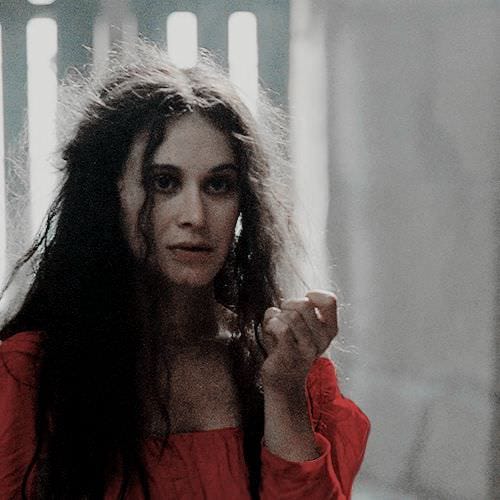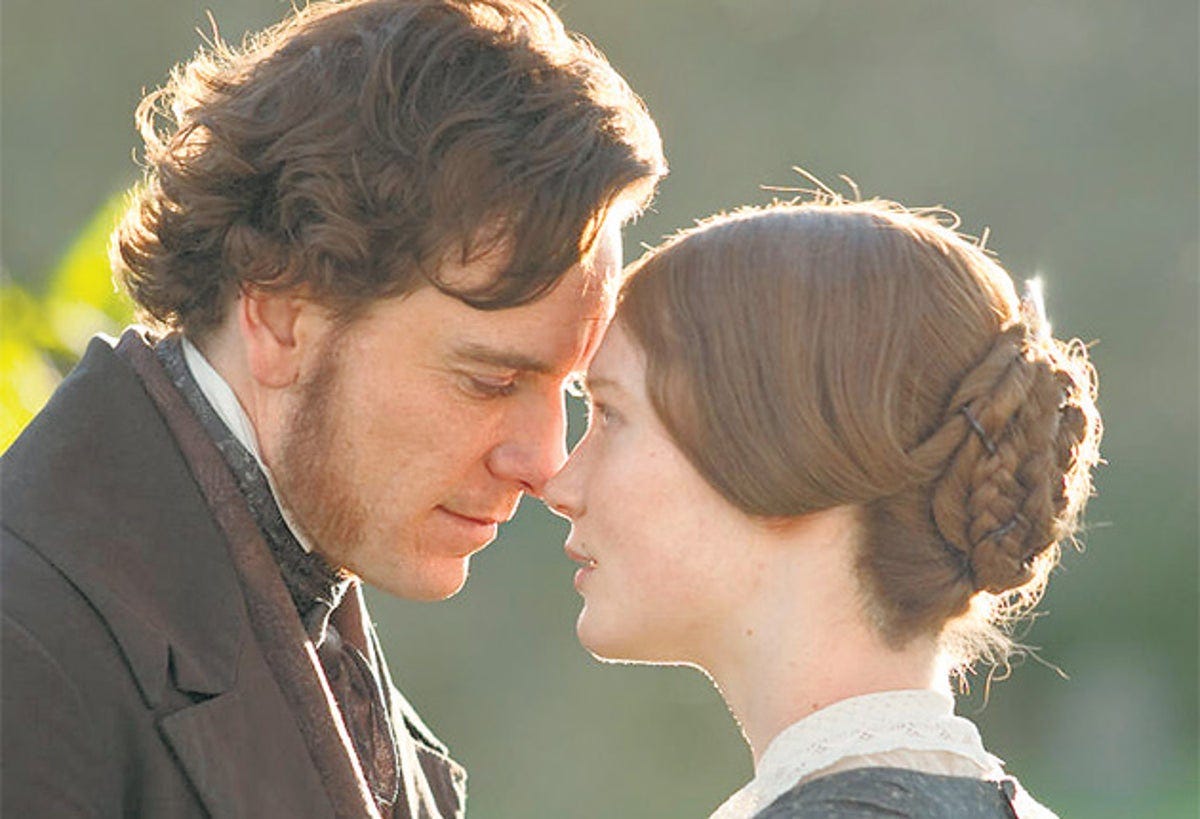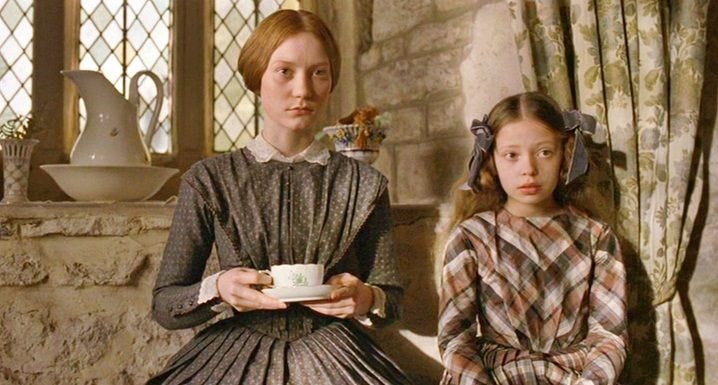What is Love? Baby, Don't Hurt Me: Mr. Rochester’s Male Aggression, Verbal Abuse, and Masterful Manipulation in Charlotte Brönte’s Jane Eyre
Reader, Mr. Rochester is not the dreamy, knight-in-shining-armour that many Brönte fans claim him to be. In my reading, he is actually a manipulative maniac to Jane, Bertha, and Adèle.
Charlotte Brontë’s Jane Eyre1 has been significantly analyzed for its early feminist sentiments expressed principally through her depictions of Victorian class, gender, and power dynamics. Within these dynamics, however, lies the motif of domestic violence that is often neglected by Brontë critics, consequently undermining not only the novel’s revealed link between violence and power but also Brontë’s strong social commentary about the masculine desire for dominance and the application of aggression to achieve it. Bonnie Zare’s article “Jane Eyre’s Excruciating Ending” 2expounds how the novel’s ending refuses to resonate with feminist readers due to Rochester’s obsession with “proving his absolute power over women” (207), which he executes through “infantile” (207) and “neurotic” (214) cruelty. Since the novel is told through Jane’s perspective, Rochester is romanticized with readers tending to love him as she does, correspondingly subjecting them to Rochester’s control and demonstrating how mysterious Byronic men attract women in the first place. Rochester’s problematic glorification highlights how gendered power structures evoke violence, undermining readers to uplift the experiences of Brontë’s heroines rather than playing into Rochester’s vengeful sob story. Through Mr. Rochester’s physical, emotional, and psychological violence towards Bertha, Jane, and Adèle, Charlotte Brontë characterizes him as a cautionary tale of the ramifications that can stem from Victorian patriarchal ideals as Rochester continually demands control and resorts to aggression when his authority is threatened.
The story of the first Mrs. Rochester—Bertha Mason—is rather controversial as readers and critics endlessly debate whether to villianize Bertha or Rochester. Yet a feminist and postcolonial reading declares it Rochester. His first act of violence is agreeing to marry Bertha solely for her inheritance and beauty in an attempt to uplift his status. Rochester’s ego undoubtedly enjoyed how “All the men in her circle seemed to admire her and envy [him]” (Brontë 381). He enjoys how she reflects unto him rather than her herself. However, Rochester’s idealized version of Bertha becomes disillusioned the moment she shows imperfection, revealing that his attraction was to sheer fantasy. Instead of getting his wife the help she needs, or keeping her close to her family in Jamaica, he brings her with him to Europe only to leave her forlorn and confined. Rochester demonstrates a different form of violence by moving Bertha from her hometown Jamaica to Europe as he colonizes her both literally and figuratively, maintaining that he acted in Bertha’s best interest despite ridding her of her agency whilst granting it to himself.
Rochester cares more for his power than for Bertha, inflicting never-ending violence on her by caging her like an animal while cleverly exposing the consequences of women refusing to conform to traditional gender roles. Not only does Rochester treat Bertha so ruthlessly but he constantly defends entrapping her, justifying that her outbursts were “so strong, only cruelty could check them; and I would not use cruelty” (383). Rochester limits his definition of cruelty to only physical abuse, conveniently negating its many other forms, thereby allowing his rationale to appoint himself the good guy. In Rochester’s rationalization, Brontë provides a social commentary regarding both the social and legal stances of abuse in the Victorian era. Editor Richard Nemesvari3 expands this notion by exposing the larger commentary at work between Mr. Rochester and Bertha. He asserts that Rochester’s “madwoman wife threatens him on multiple levels—physical, social, emotional, psychological— and no amount of Byronic posturing can free him from his awareness of her existence” (Nemesvari 34). As Nemesvari substantiates, Rochester’s aggression stems from Bertha’s threat to his masculinity as she challenges the patriarchal norms that he benefits from. Brontë illustrates Bertha as an antithesis of the ideal Victorian wife and woman that Rochester desires, therefore her unwillingness to be molded into such deems her discardable. Rochester can not force Bertha into submission nor bear a relationship where he is not in control, thus choosing to lock her, along with a confrontation about power dynamics that she awakens, away forever out of his sight.
Despite locking her away, Rochester continues to exert power over Bertha through degradation as he states that, “her cast of mind common, low, narrow, and singularly incapable of being led to anything higher [or] expanded to anything larger” (381). His verbal abuse of Bertha is atrocious and utterly discounts her mental illness, refusing to sympathize with or attempt to understand the poor woman. Moreover, he details her “violent and unreasonable temper” (382), furthering that Bertha filled days and weeks up with “abuse of [him]” (353), yet these characterizations better apply to Rochester himself than Bertha. He turns on her the moment she strays from his ideal and denies her any empathy, instead, sentencing Bertha to a lifetime of abuse imprisoned in his attic. While Bertha is no saint, Rochester’s complaints of violence and abuse are ironic considering his mistreatment of not only her but the other women in his life. It takes one to know one, Mr. Rochester.
Rochester, despite claiming that Jane is his intellectual equal, is well aware of their inequality, and it is for this reason that he likes her. He knows that he is above her in wealth, status, and gender alone with this awareness perpetuated through his verbal abuse of Jane involving belittlement, manipulation, and degradation. Zare describes Rochester’s “infantile cruelty” (207), disguising himself as a gypsy to manipulate Jane and showcasing him taking “advantage of the female role to gain Jane’s confidence” (207). This instance emphasizes Rochester, as Nemesvari states, using “women as instruments to get what he wants” (Nemesvari 30). Rochester dressing as a woman is not only an act of manipulation but exposes a gendered double standard as a Victorian man would likely never trade his patriarchally superior role for womanhood, therefore, Rochester’s feminine dress-up is undeniably patronizing, treating the role of ‘woman’ as a mere character for Rochester to perform in his sick games without having to face the hardships of actual women. Rochester uses women literally through his exploitation of Jane, and figuratively as he plays the role of a woman to deceive an actual one for his twisted benefit. This example forms a consensus between Zare and Nemesvari’s notions as Rochester takes “advantage of the female role” (Zare 207) or as Nemesvari puts it, “uses women as instruments” (Nemesvari 30) to fool Jane into disclosing her affections thereby placing the power back in his hands. Moreover, Rochester’s consciousness of their inequality is observed as he asks Jane how much money she has, predicting that it is “not much” (Brontë 298). Jane answers that she has five shillings when Rochester takes her purse…and chuckle[s] over it as if its scantiness pleased him” (298). In this act, Rochester forces Jane to admit her poverty only to stroke his ego and reinforce her dependence. Zare reveals Rochester’s verbal abuse as he “habitually undermines Jane’s adulthood…by calling her a “linnet,” “fairy,” “imp,” “salamander,” and even “thing” (Zare 207). Charlotte Brontë portrays these seemingly innocent nicknames by Rochester to showcase how this type of verbal violence was normalized in her period through its exclusion from conventional definitions of abuse.
Charlotte was not the only author to reveal how patriarchal power dynamics allowed nonphysical acts of violence to go unnoticed or rather, unrestricted, within romantic relationships. Her sister, Anne Brontë writes an equally unequal relationship to that of Jane and Rochester through Helen and Arthur Huntingdon from The Tenant of Wildfell Hall4 in which both the good-hearted Jane and Helen fall for wealthy Byronic men with dubious pasts, sharing little in common besides initial attraction. Helen explains, “It is impossible to get him to feel interested in what I most like to talk about; while…he likes to talk about things that cannot interest me—or even that annoy me—and these please him the most” (Brontë 543). Both Brontë sisters argue against patriarchally sustained romantic power imbalances as both Jane and Helen express how their partners ramble about their interests while selfishly taking little involvement in their own, illustrating how this egotistical uninterest is universal for Victorian women. Brontë emphasizes Arthur’s insensitivity to Helen as he delights in her mortification; Helen details how Arthur’s “favourite amusement is to sit…and tell [her] stories of his former amours, always turning upon the ruin of some confiding girl or the cozening of some unsuspecting husband”, continuing that he would laugh “till the tears [ran] down his cheeks” despite her “anger and agitation” (543). Arthur’s repeated retelling of his past lovers mirrors Rochester’s anecdotes of Céline and Bertha, suggesting a common thread in Byronic men, and painting them perhaps as men to avoid. As Helen and Arthur’s relationship is based on a similar inequity to Jane and Rochester, their marital demise could foreshadow the fate of Charlotte’s heroine and her beau. Anne’s story is less popular than Charlotte’s, exposing how the romanticization of Rochester is more palatable to readers than the stark Arthur and revealing a tendency to blissfully ignore male violence instead of facing its harsh reality.
In addition to verbal abuse, Jane faces threats and acts of physical violence from Mr. Rochester, contradicting previous declarations that he “would not use cruelty” (383). Even in his proposal to Jane, Rochester continually resorts to violence drawing her to him and stating, “My equal is here, and my likeness” while Jane “writhed [herself] from his grasp” (327). His actions remind Jane of his control as he restrains and physically overpowers her despite asserting their equality, undermining the credibility of his assurance. This moment is evidently ironic as he proclaims Jane to be his equal, yet physically abuses her as he makes this statement. As Jane attempts to leave him, Rochester feels his lack of control and states, “Will you hear reason?” putting his lips to her ear and threatening, “because, if you won’t, I’ll try violence” (378). Jane’s refusal to submit compels Rochester to invade her personal space, menacing as he threatens to abuse her. How is this an ideal or dreamy love interest? This scene validates Nemesvari’s observation that Rochester’s abuse often entails invasions “of Jane’s bodily space that [are] meant to both intimidate her and reinforce gendered power relationships” (Nemesvari 22). Rochester’s use of coercion and violence on his supposed equal confirms his patriarchal demand for control, characterizing him as no better than other male abusers in the novel.
While Zane and Nemesvari’s research significantly details Rochester’s abuse of Bertha and Jane, it overlooks his violence towards Adèle which deserves equal representation. Rochester declines his paternity and views Adèle as nothing more than a reminder of his past, utilizing these beliefs as excuses to treat Adèle coldly. Rochester forbids Adèle from joining him and Jane on a trip expressing, “I’ll have no brats!” and furthering that “she will be a restraint” (338). He is cruelly content with leaving little Adèle alone, agreeing only by reconciling that, “a single morning’s interruption will not matter much” (339). Rochester’s statement limits Adèle’s character as a nuisance, labelling her as an interruption between Jane and himself. In the carriage, she is stowed “away into a corner” until Jane tells Rochester to let Adèle sit beside her and Rochester hands her over like “a lap-dog” (339). This animalistic diction as though Adèle is merely a dog rather than a blossoming young lady undermines her entire characterization and potential. Rochester’s violence is highlighted as he willingly adopts Adèle only to reject her. Adèle is subjected to the same mistreatment as young Jane, explaining why only Jane is warm to the young girl. Even in the ending, Rochester places Adèle in a dangerous school and it is Jane who saves her again, never Mr. Rochester.
Rochester continuously acts abusively, being the common thread of violence between Bertha, Jane, and Adèle. He personifies the promotion of men in gendered power structures, refusing to allow for growth in these ideologies. Through Rochester’s inability to reform, Charlotte Brontë establishes how these behaviours are supported by Victorian norms with forms of marital abuse being loosely defined and at times, normalized. Rochester necessitates systemic change and representation for these women’s stories, and although Brontë cannot fix Victorian customs, she can ensure that the diverse experiences of Bertha, Jane, and Adèle are centralized.
thank you for reading my literary library. your support never goes unrecognized or unappreciated. as always, if you have anything to add to the conversation: comments, questions, praise, contrarian perspectives… don’t hesitate!
from my heart to yours, kara koblanski. <3
Brontë, Charlotte, Jane Eyre, edited by Richard Nemesvari, 2nd ed., Broadview Press, 2022.
Zare, Bonnie. “Jane Eyre’s Excruciating Ending.” CLA Journal, vol. 37, no. 2, 1993, pp. 204–20. JSTOR, http://www.jstor.org/stable/44322560. Accessed 1 Mar. 2023.
Nemesvari, Richard. Introduction. Jane Eyre, by Charlotte Brontë, 2022, 2nd ed., pp. 22-36.
Brontë, Charlotte. Appendix C: Representations of Violence Against Women in Victorian Fiction. The Tenant of Wildfell Hall, by Brontë, Anne, 1848, pp. 542-543.









Kara, your review /explaining is absolutely is AMAZING REMARKABLE, , and tempts this non-fiction gal to buy the book! Thank you so much Kara!